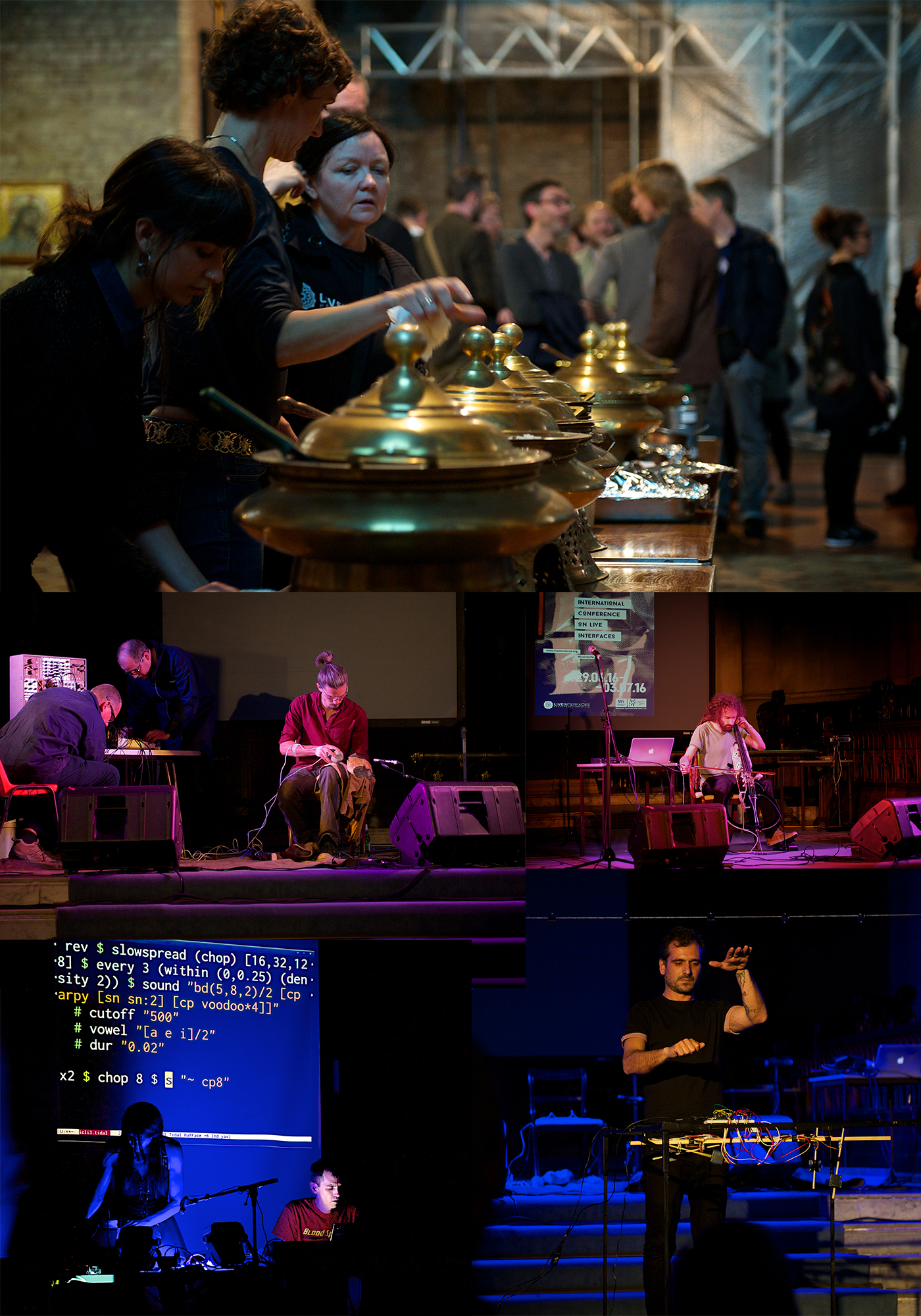The 3rd International Conference on Live Interfaces was held at the University of Sussex in late June, 2016. This was the first international conference held at the newly refurbished Attenborough Centre for the Creative Arts (ACCA), and the building proved to be an excellent location for such an event, with a large auditorium for performances and paper sessions, as well as smaller rooms, called “towers”, for workshops, installations and posters, and the ACCA café bar which opens out onto the lawns for workshops in the sunshine (between raindrops). The conference was organised by a team who are all members of the university’s Experimental Music Technologies Lab.
The Live Interfaces conference focuses on the use of technology in the performing arts: how technology becomes a prosthesis of the performer’s body - how it augements, amplifies and empowers performers, whilst, at the same time, constraining, reducing and abstracting the conception of what might be possible. Liveness is crucial here: due to its real-time application this is not a technology that can be interpreted, pondered over, or selected from, but rather the situated technology of the present, the immediate and the dexterous body - it’s the technology of the stage.
 Pictures from ICLI performances
Pictures from ICLI performancesTechnology is never neutral: it enframes, encapsulates, engulfs. The philosophy of technology has given a solid account of how technology changes our work processes, our social structure, the way we think and even the way we evolve as humans (see the work of Marx, Heidegger, Ihde or Stiegler). However, we often hear statements where technology is described as an add-on to artistic projects, a mere means to an end. Such narratives reduce technics to embodied knowledge, the how of things, as opposed to more theory-focussed accounts, the why of things; a binary model introduced as early as Plato with his articulation of techne and episteme. Consider, for example, the well-known account of composer Edgar Varèse calling for new instruments to express his new musical ideas. These ideas were clearly inspired by paradigm shifting developments in physics, relativity and mathematics. With electronic sound technology in its nascence, Varèse could begin to imagine the sounds of the future. The narrative has often been of Varèse as the visionary (or should we say “audionary”?) who was capable of imagining (or audioning) new sounds, and it was technology that was lagging behind his imagination (erm…). This is clearly an oversimplification as the theoretical work by Helmholtz on sound had already been published in the 1860s, largely derived from a technological framework of scientific instruments for measuring the properties of sound. We also find electronic instruments dating back to the 1880s, exemplifying the common truism that whenever a new technology emerges - such as oscillators, telecommunication, or computers - it will immediately be applied in the domain of music. Varèse’s thinking was already technologically conditioned.
The ICLI conference explored this symbiotic relationship between technology and artistic expression. It engaged with the complex loop of how materiality, interfaces, communication, and imagination relate; how the technological substrata presents itself as ideological frameworks, methods, aesthetics and prostheses of the human body. In order to study this relationship between new instruments and new artistic expression we invited Halldor Úlfarsson and Andrew McPherson - both instrument designers par excellence - to run two invited workshops, set up to explore such questions as:
- How do we compose for new instruments?
- Can we redesign old instruments for new music?
- What happens when familiar instruments gain new expressive scope?
Kate Ryder performing on the Electromagnetic Piano and Alice Eldridge on her version of the Halldorophone
When employing computational interface technologies in the performing arts, we face diverse problems related to how the audience interprets the role the technology takes in a performance. For example, should the technology be obvious and synchronous with performance gestures or hidden and part of the mystique of the artist? Topics of liveness, immediacy and presence, as well as mediation, signification and expression are critical and should be questioned in order to gain a deeper understanding of the role contemporary technologies play in contemporary human expression. With the Live Interfaces conference series, we are interested in exploring the philosophy of interface design, and studying how performance technologies function in their diverse art forms, as well as how we use them to communicate our intention as performers on stage.
The above is my quick attempt to document some of the thoughts emerging with me during this year’s ICLI conference, but there is also proper documentation: the recently published ICLI 2016 proceedings contain information and the submitted pieces for the paper sessions, keynotes, doctoral colloquium, installations, workshops and performances. The proceedings have been published with REFRAME Books. The conference was also documented on video, and most of the sessions can be found on the Emute Lab’s YouTube channel.
If you found this post intersting, you can share it or follow me on Twitter!